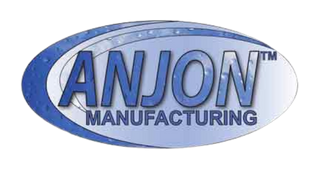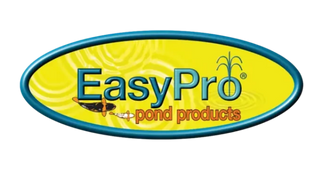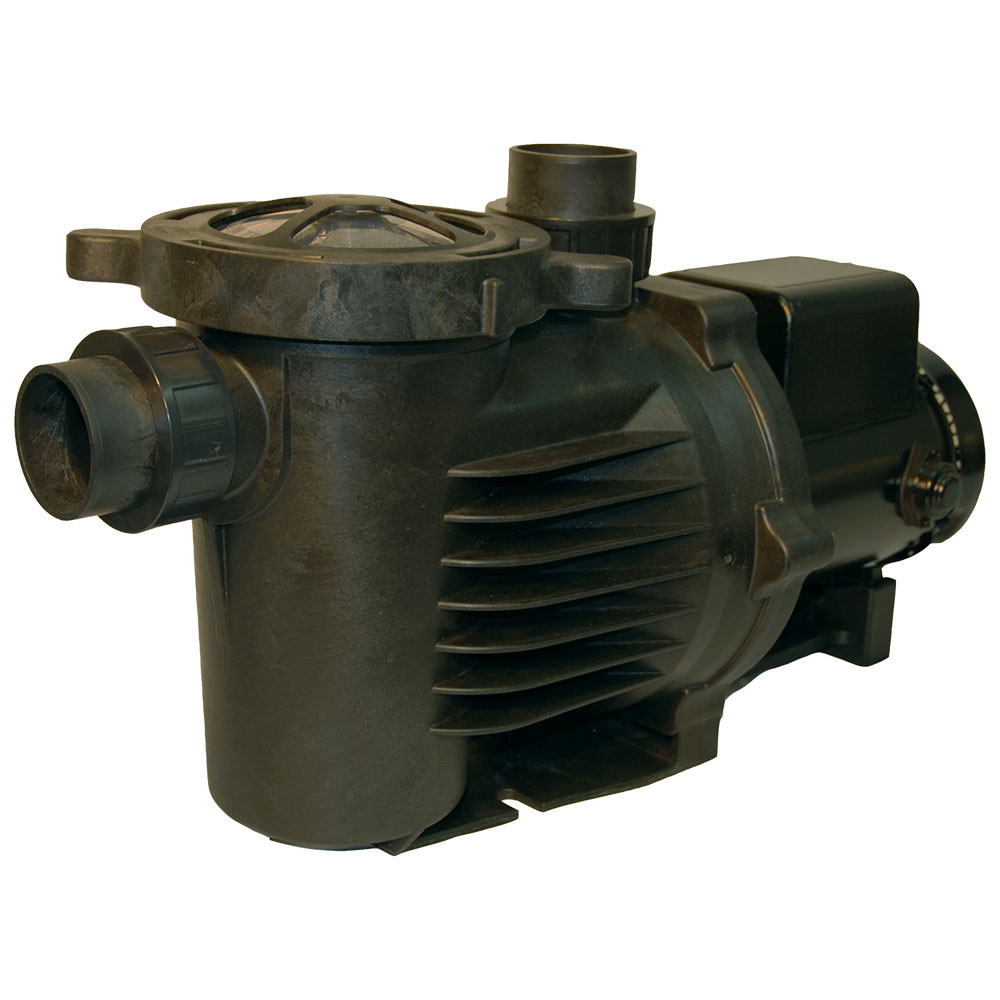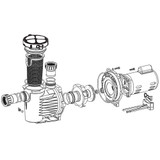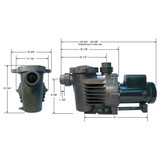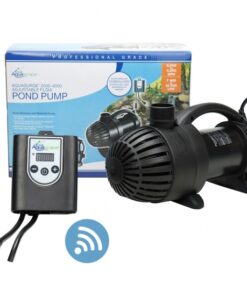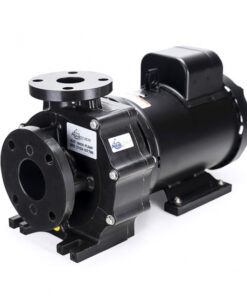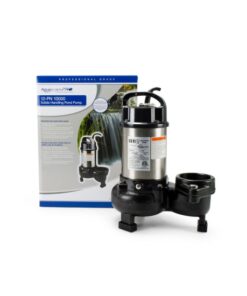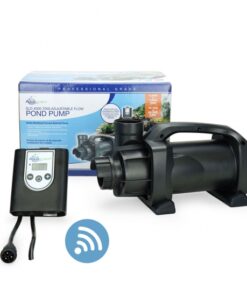|
Model A2-1/2-HH
|
Model A2-3/4-HH
|
Model A2-1-HH
|
| Ideal Use |
Out of Water |
Out of Water |
Out of Water |
| Application |
Fresh Water or Salt Water* |
Fresh Water or Salt Water* |
Fresh Water or Salt Water* |
| Motor Type |
Self-Priming Centrifugal |
Self-Priming Centrifugal |
Self-Priming Centrifugal |
| Approximate Dimensions |
29″L x 11.5″W x 13″H |
29″L x 11.5″W x 13″H |
29″L x 11.5″W x 13″H |
| Max Head Pressure |
54 Feet |
67 Feet |
78 Feet |
| Max Flow |
6,660 GPH @ 4 FoH |
7,740 GPH @ 8 FoH |
8,400 GPH @ 9 FoH |
| Intake & Discharge Ports |
2″ Ports w/ Unions Included |
2″ Ports w/ Unions Included |
2″ Ports w/ Unions Included |
| Motor Size |
1/2 HP |
3/4 HP |
1 HP |
| Motor Enclosure |
Open Drip Proof (ODP) |
Open Drip Proof (ODP) |
Open Drip Proof (ODP) |
| Revolutions per Minute (RPM) |
3,450 RPM |
3,450 RPM |
3,450 RPM |
| Voltage & Cord Options |
115V w/8′ Cord
230V No Cord |
115V w/8′ Cord
230V No Cord |
115V w/8′ Cord
230V No Cord |
| HZ/Max Amps |
50/60 Hz, 8.44 Amps |
50/60 Hz, 11.21 Amps |
50/60 Hz, 14 Amps |
| Warranty |
3-Year Fresh Water Applications
1-Year Salt Water Applications |
3-Year Fresh Water Applications
1-Year Salt Water Applications |
3-Year Fresh Water Applications
1-Year Salt Water Applications |
*Salt water kits are available at the time of pump purchase and are required for when operating with salt water.
|
Model A2-11/2-HH
|
Model A2-2-HH
|
Model A2-3-HH
|
| Ideal Use |
Out of Water |
Out of Water |
Out of Water |
| Application |
Fresh Water or Salt Water* |
Fresh Water or Salt Water* |
Fresh Water or Salt Water* |
| Motor Type |
Self-Priming Centrifugal |
Self-Priming Centrifugal |
Self-Priming Centrifugal |
| Approximate Dimensions |
29″L x 11.5″W x 13″H |
29″L x 11.5″W x 13″H |
29″L x 11.5″W x 13″H |
| Max Head Pressure |
83 Feet |
89 Feet |
94 Feet |
| Max Flow |
9,360 GPH @ 11 FoH |
10,800 GPH @ 15 FoH |
12,240 GPH @ 18 FoH |
| Intake & Discharge Ports |
2″ Ports w/ Unions Included |
2″ Ports w/ Unions Included |
2″ Ports w/ Unions Included |
| Motor Size |
1 1/2 HP |
2 HP |
3 HP |
| Motor Enclosure |
Open Drip Proof (ODP) |
Open Drip Proof (ODP) |
Open Drip Proof (ODP) |
| Revolutions per Minute (RPM) |
3,450 RPM |
3,450 RPM |
3,450 RPM |
| Voltage & Cord Options |
115V No Cord
230V No Cord |
230V No Cord |
230V No Cord |
| HZ/Max Amps |
50/60 Hz, 8.31 Amps |
50/60 Hz, 10.2 Amps |
50/60 Hz, 13.2 Amps |
| Warranty |
3-Year Fresh Water Applications
1-Year Salt Water Applications |
3-Year Fresh Water Applications
1-Year Salt Water Applications |
3-Year Fresh Water Applications
1-Year Salt Water Applications |
*Salt water kits are available at the time of pump purchase and are required for when operating with salt water.
PerformancePro Artesian2 High Head Pumps are centrifugal external “out-of-pond” pumps.
How It Works
When the electric motor is turned on it utilizes centrifugal force to generate velocity of the water. The water then flows into the strainer pot from the water source, filtering out debris. Water continues its flow to the impeller where that converts kinetic energy into static pressure allowing the pump to maintain pressure and is then forced out of the pumps discharge port resulting in continuous water flow for your waterscape oasis.
Self-Priming Pump
The PerformancePro Artesian2 High Head Pump is a true self-priming external pond pump. Designed to prime and operate at varying heights up to 9 feet above the water source surface as well as varying horizontal lengths. Note: operating at maximum suction lift height may negatively affect the pumps overall performance. If after starting the high head pond pump you notice it takes more than three minutes for water to start flowing into the priming pot after being filled with water and energized, it is recommended to install a rubber flapper type swing check valve.
The valve should be as low and as close to your source water as possible to maintain constant pressure and shorten prime time. The best location can even be underwater when possible as this can provide an air tight fit even without PVC adhesive. Some swing check valves have true union connection fittings that offer easier access for cleaning when needed. Never use a spring loaded check valve as it will reduce or stop flow.
Installation Guide
Pump Location: position the pump as low and close to the source water as practical to reduce the time to prime and insure top performance.
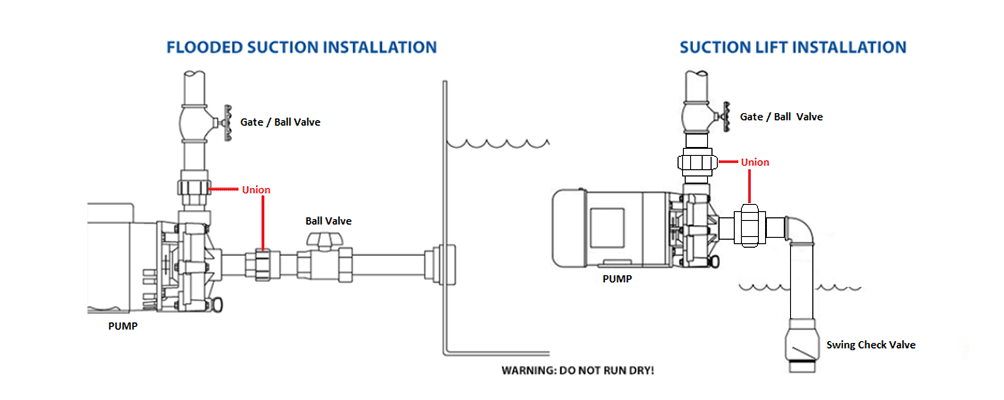 *Actual pump not shown in diagram.
*Actual pump not shown in diagram.
Flooded Suction
• Ideal setup as it does not require priming.
• Ball Valve installed before and after the pump for ease of maintenance.
On flooded suction systems where the water source is higher than the pump, the pump will fill with water once the supply valve is opened. However, on both flooded and non-flooded systems it is recommended to open the strainer pot lid, fill with water, ensure the lid O-ring is clean of any debris and close the lid securely prior to starting.
Once priming pot is filled and supply valves (if present) are opened your pump is now ready to prime. Turn the motor on by plugging in the unit or switching on the power supply. Priming will vary in length. Water should continue to flow into the basket as the pump goes through the priming process. The priming process should not take longer than 15 minutes. The pump should never run dry. If water stops flowing into the strainer pot, shut the pump off immediately and see the manual for Troubleshooting Tips.
Note: At initial start up, the water level in the pump housing, as seen through the clear lid should drop rapidly and have a small amount of water entering the pump in less than 3 minutes. There is no need to be alarmed as this is normal. If no air leaks are present the small amount of water flow will continue to gradually increase resulting in a fully primed pump operating at maximum performance.
Suction Lift
• Suction lift can be installed with a Swing Check Valve.
• Check Valve installation is recommended below water level to avoid dry running unit and aids in priming.
The pump ports are 2” slip on both the inlet and discharge ports. The fittings included with your pump should connect to PVC or flex pipe plumbing. All plumbing lines should be self supported and properly aligned. This will prevent undue stress to the housing and fittings. We recommend using a good primer and PVC cement to glue the pipe to the tailpiece fittings.
Installations in which the water level is elevated above the pump it is highly recommended to use a ball or swing type check valve to prevent back flow and possible reverse rotation. A ball valve will supplement a swing check valve and allow flow adjustments.
FILL THE PRIMING POT WITH WATER BEFORE STARTING THE PUMP.
Be sure your installation location is no higher than 9 feet above the water surface level. If using smaller than 2” pipe, excessive fittings such as elbows, sweeps or reducers, using an excessively long pipe run, using additional strainers or any other water flow restriction device, can increase the prime cycle time. Refer to the Pump Operation information in the manual.
When determining pump placement, it is important to consider the distance and height from the water source. Position the pump no higher than 9 feet from the water source. Positioning is also important to maintain the pumps ability to stay primed and minimize cavitation.
Recommended Maintenance
Clean the Basket: The strainer basket in the priming pot should be inspected and cleaned at least once a week, more often if excessive debris is present in the operating environment.
Seals and Bearings Pump seals and bearings experience normal wear and degrade over time. It is recommended to change pump seals every 3 to 4 years for fresh water applications and every year for salt water applications. The frequency of replacement will be determinate upon environment and water quality. If leakage is noticed at anytime, check troubleshooting tips and contact us for parts and advice. If the pump becomes abnormally noisy, this could be a sign that the bearings are failing and need replacement.
Winterization
Freezing temperatures cause water to expand and may result in damage to the pump, plumbing, and other connected components resulting in costly repairs. Winterizing your pump is necessary if freezing temperatures occur in your geographic area for extended periods of time. If freezing temperatures are not common but may on occasion drop below freezing, it is advised to follow winterization procedure in the manual to protect your pump.
How to Read a Water Pump Flow Chart
The Flow Chart below is designed to allow you to plot your pond’s water-flow requirements, and easily determine which pond pump will meet those requirements.
Start by calculating your pond’s specific water-flow requirements, measured by Head Pressure (Feet) and Gallons Per Hour (GPH) water flow.
Flow Chart

Aim for the Middle of the Curve:
After plotting your calculation on the Flow Chart, find a pump that falls in the middle third of the pump curve, not too close to either axis. Pumps that fall on the fringes of the curve will not work as efficiently for your application, and they will be pushed to their operating limits, reducing their life span.
Other Considerations When Choosing a Pump:
It’s Better to Oversize than Undersize: You are better to slightly oversize a pump than to undersize. When oversizing, you can always install a ball valve to reduce the water down to your desired flow.
Check Your Other Equipment: Choose a pump that does not exceed the indicated maximum flow rate on your filter or water feature. Also, be sure the tubing you select can handle the flow rate of your pump.
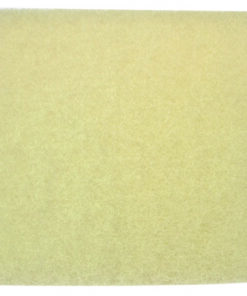 Aquascape Classic Series Mini BioFalls®/UltraFalls Filter Mat (MPN 29082)
1 × $39.98
Aquascape Classic Series Mini BioFalls®/UltraFalls Filter Mat (MPN 29082)
1 × $39.98 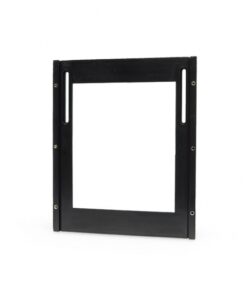 Aquascape Signature Series 6.0 And 8.0 Pond Skimmer Slide Plate (MPN 29214)
1 × $42.99
Aquascape Signature Series 6.0 And 8.0 Pond Skimmer Slide Plate (MPN 29214)
1 × $42.99 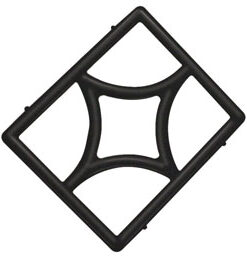 Aquascape Classic Series Standard/Grande BioFalls® Filter Support Rack (MPN 29081)
1 × $72.99
Aquascape Classic Series Standard/Grande BioFalls® Filter Support Rack (MPN 29081)
1 × $72.99 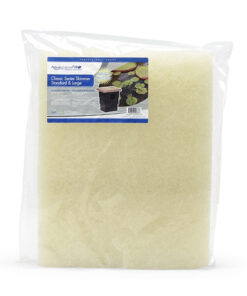 Aquascape Classic Series Standard and Large Pond Skimmer Filter Mat (MPN 29073)
1 × $39.99
Aquascape Classic Series Standard and Large Pond Skimmer Filter Mat (MPN 29073)
1 × $39.99  Aquascape Signature Series 6.0 Pond Skimmer Weir Plate Assembly (MPN 29009)
1 × $59.99
Aquascape Signature Series 6.0 Pond Skimmer Weir Plate Assembly (MPN 29009)
1 × $59.99 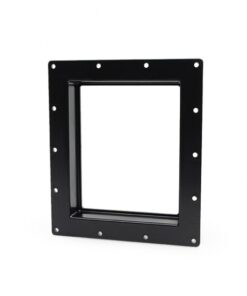 Aquascape Signature Series 6.0 And 8.0 Pond Skimmer Liner Plate (MPN 29215)
1 × $42.99
Aquascape Signature Series 6.0 And 8.0 Pond Skimmer Liner Plate (MPN 29215)
1 × $42.99 




